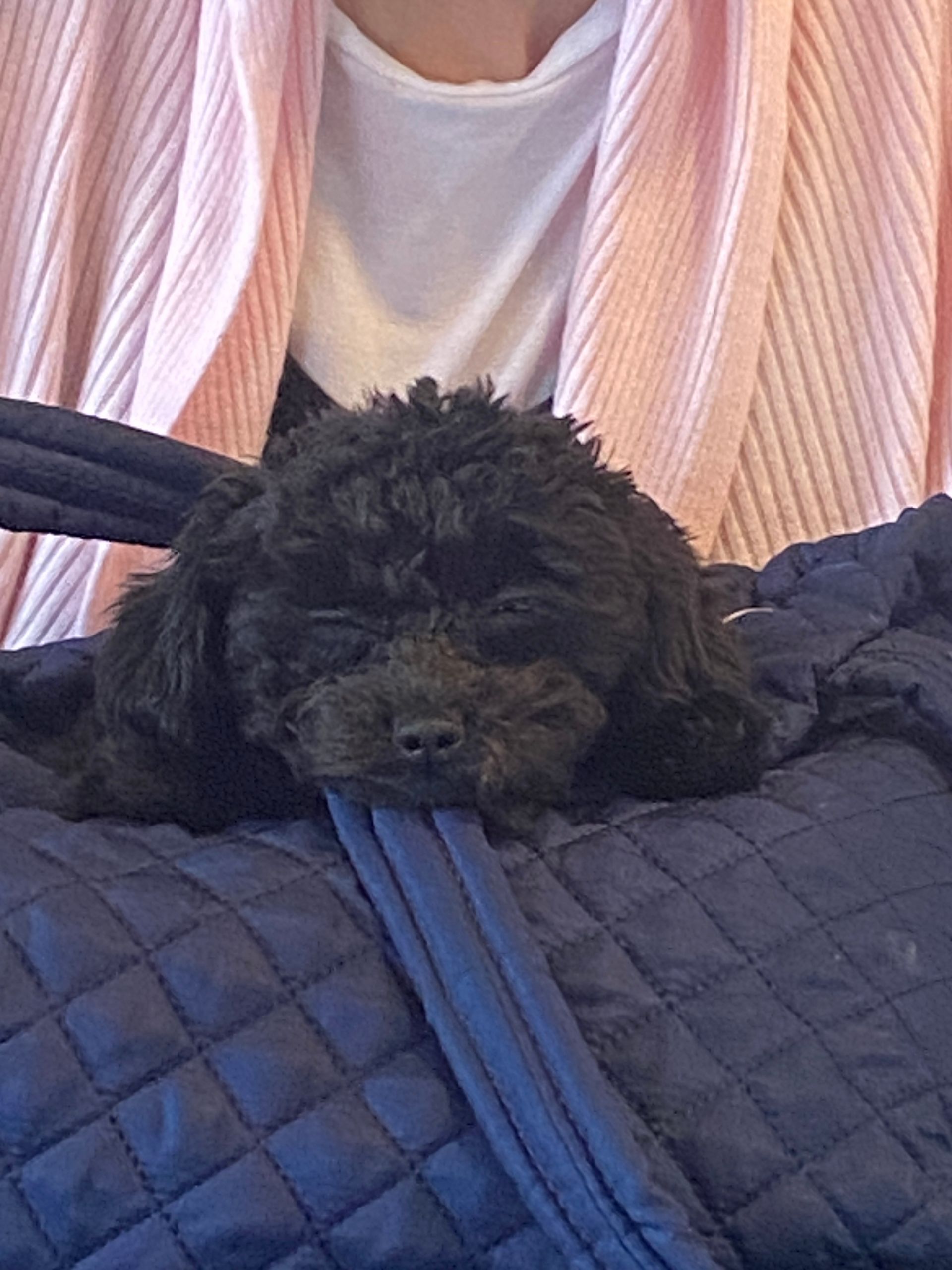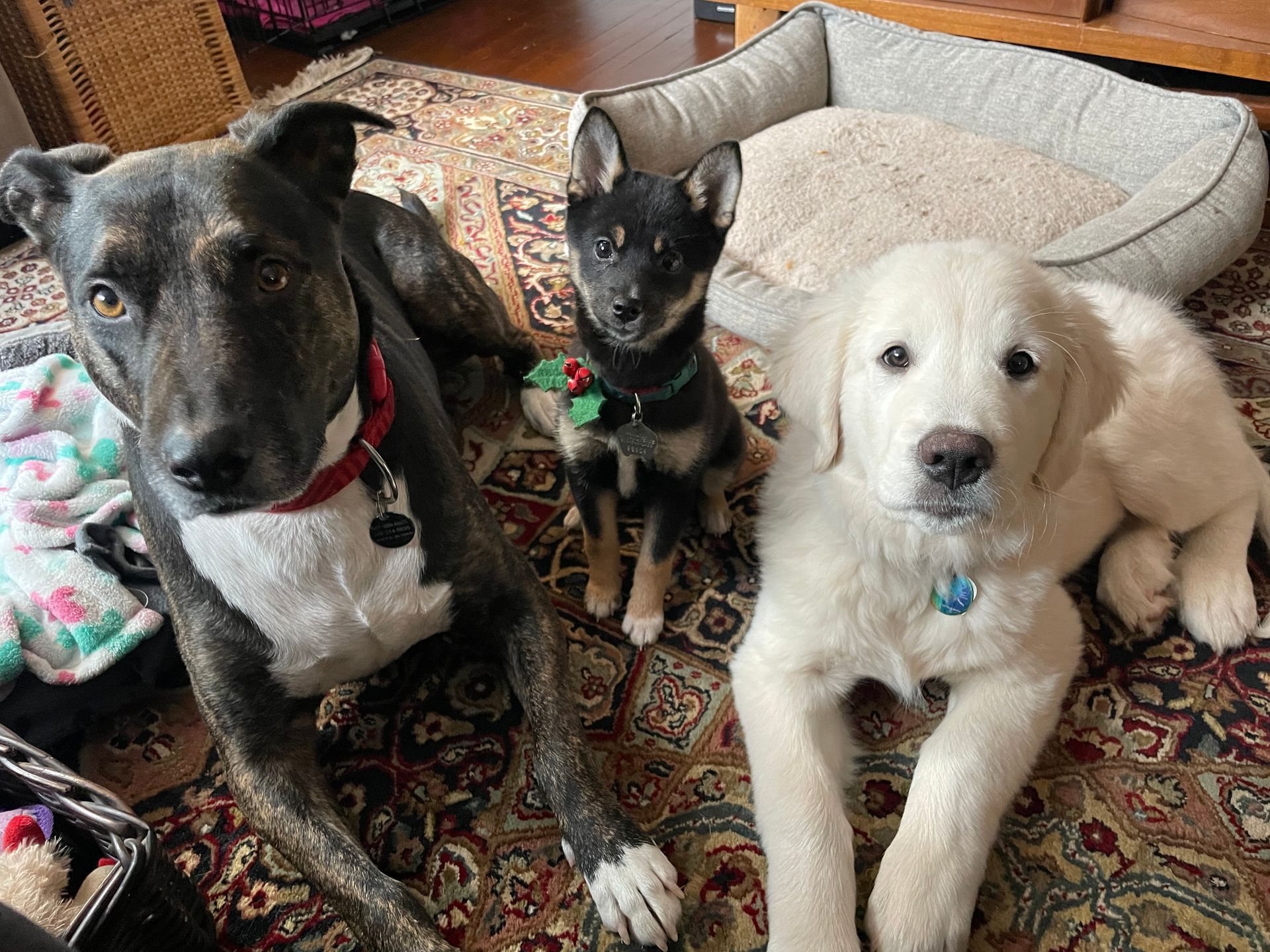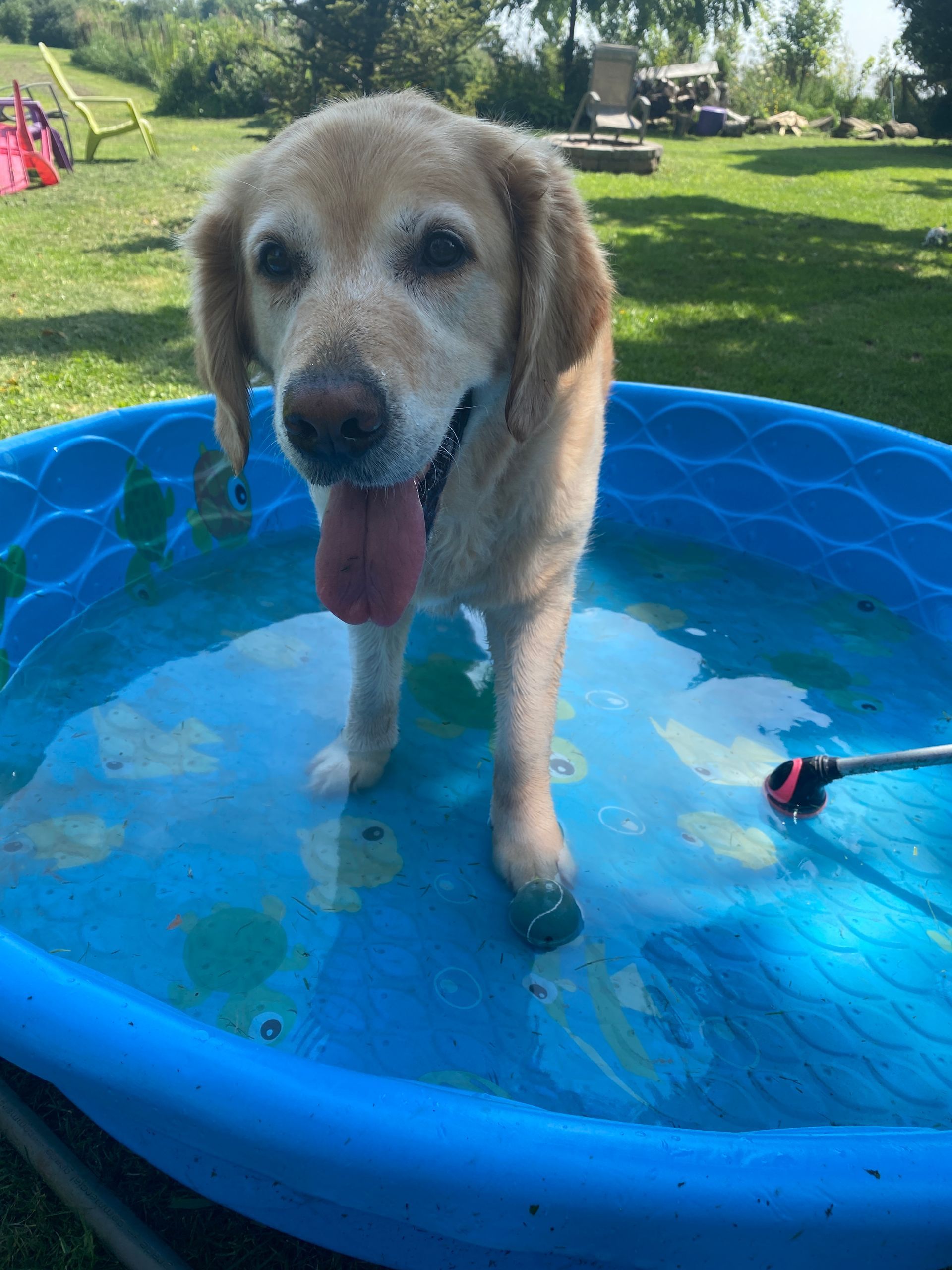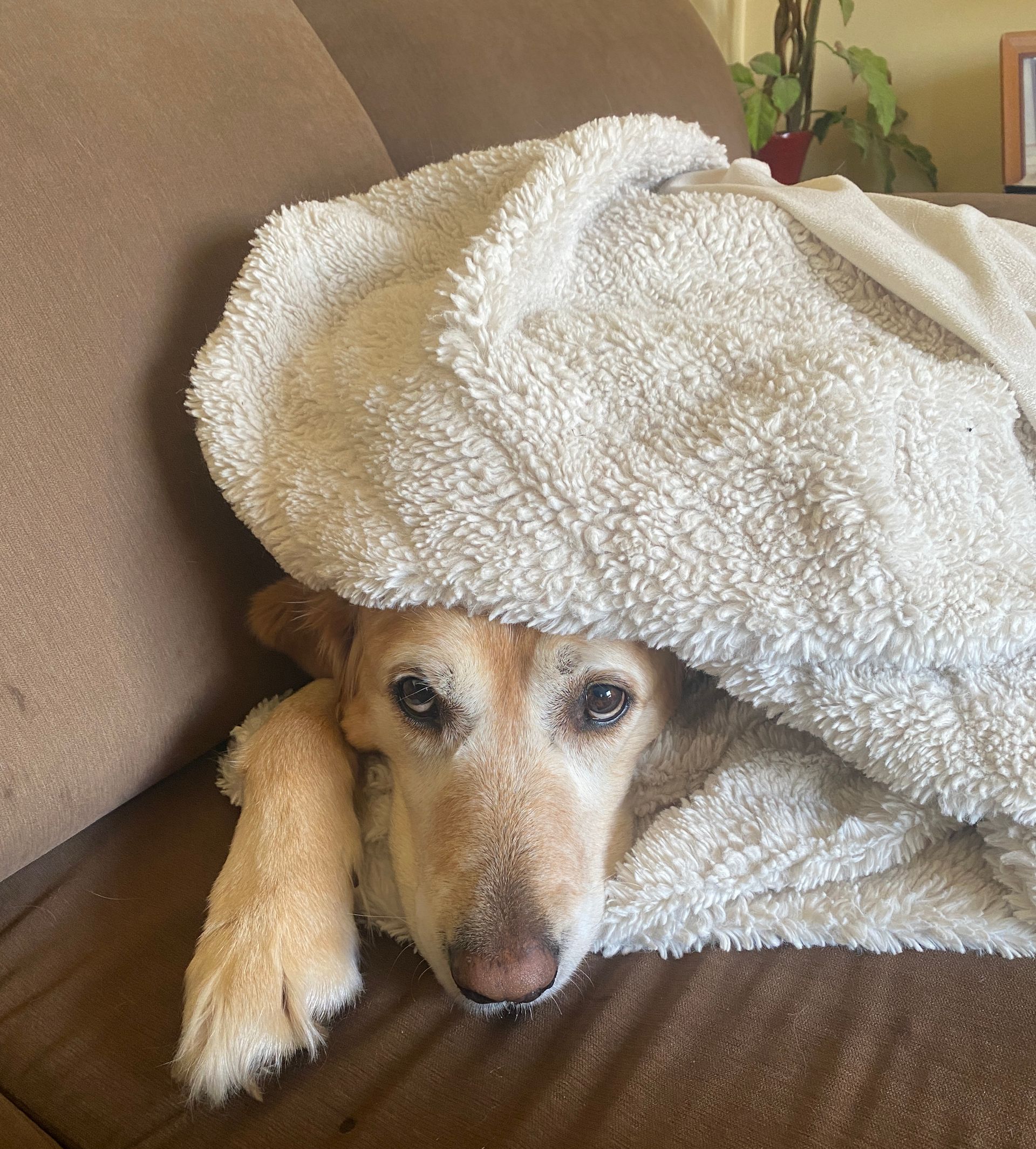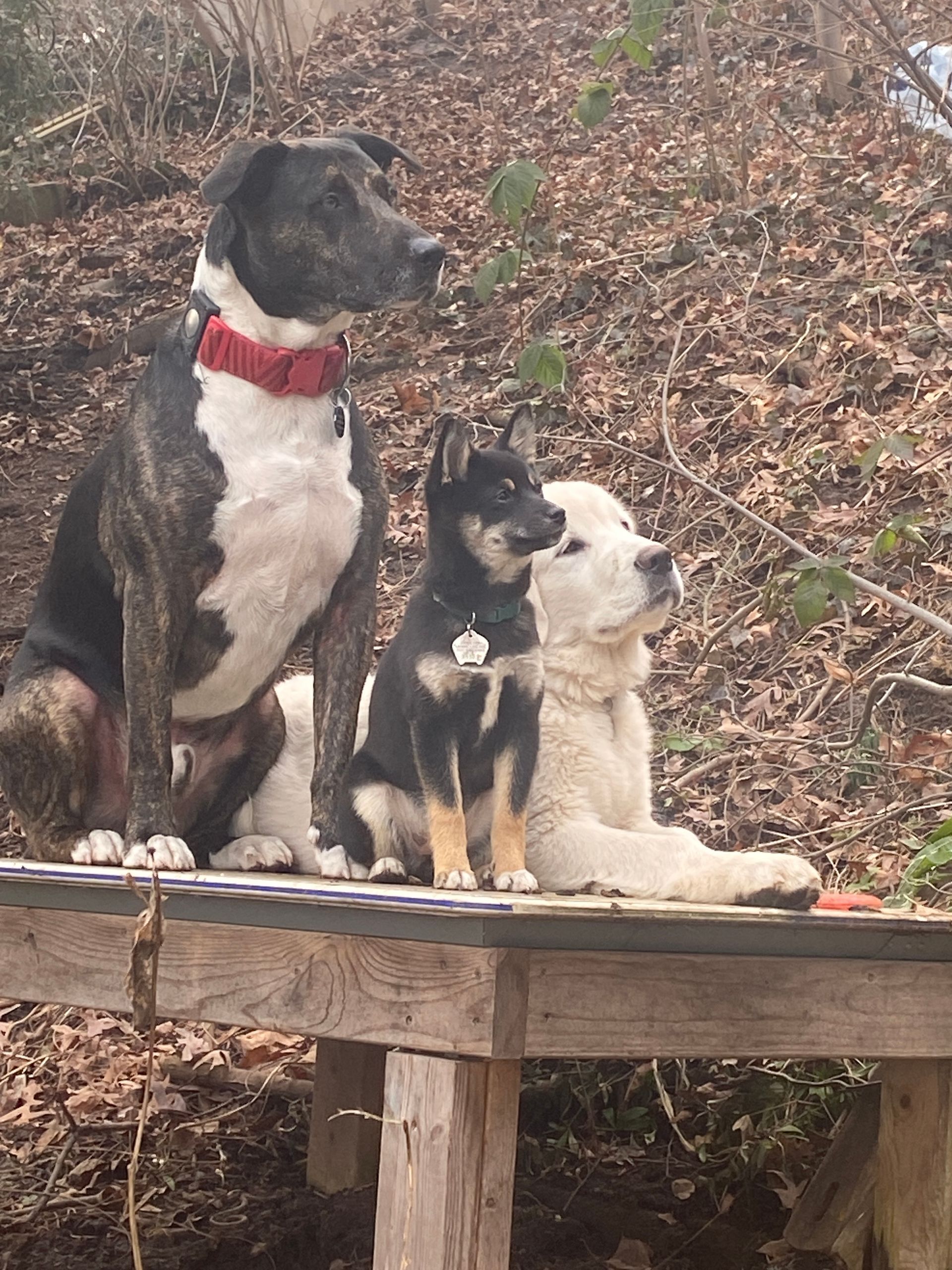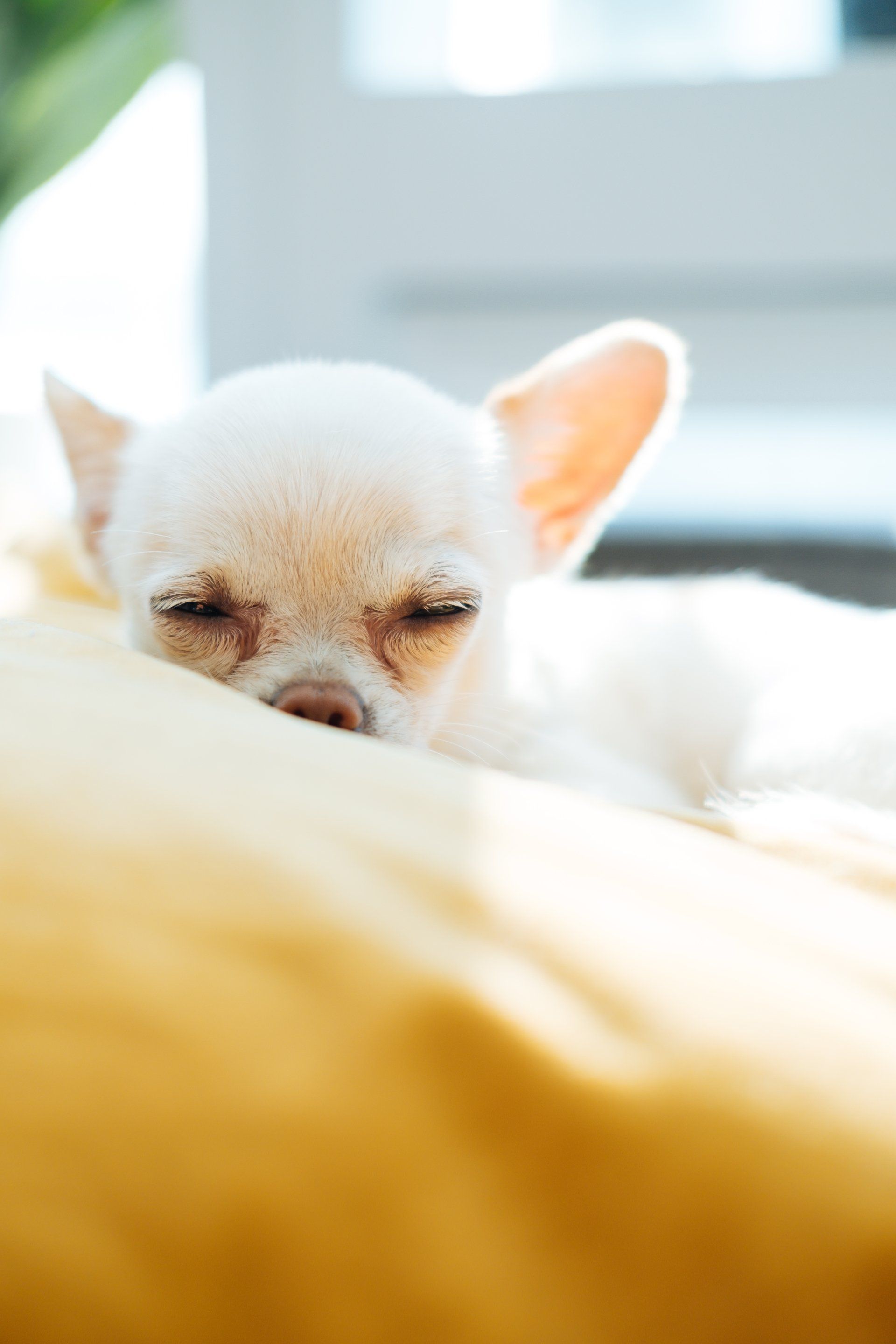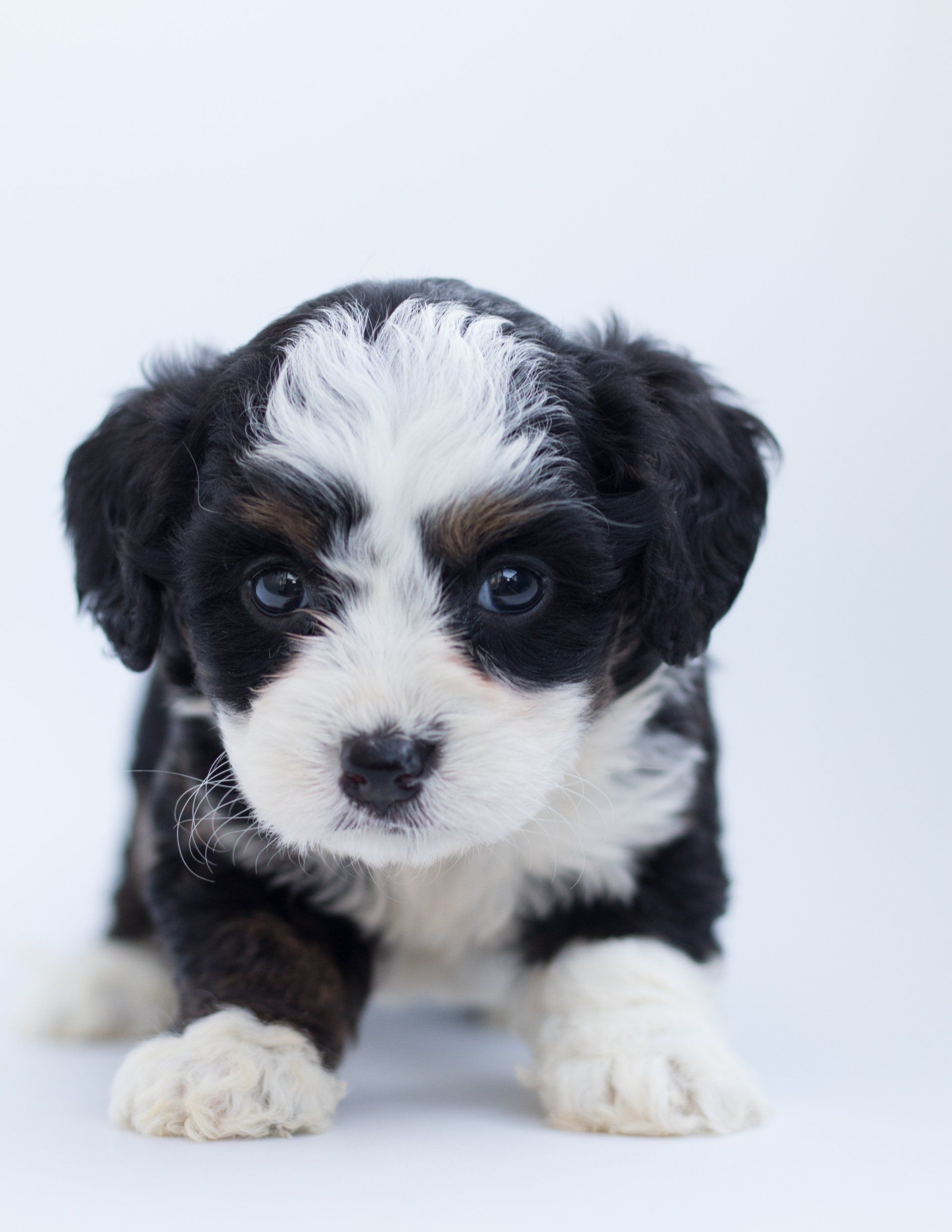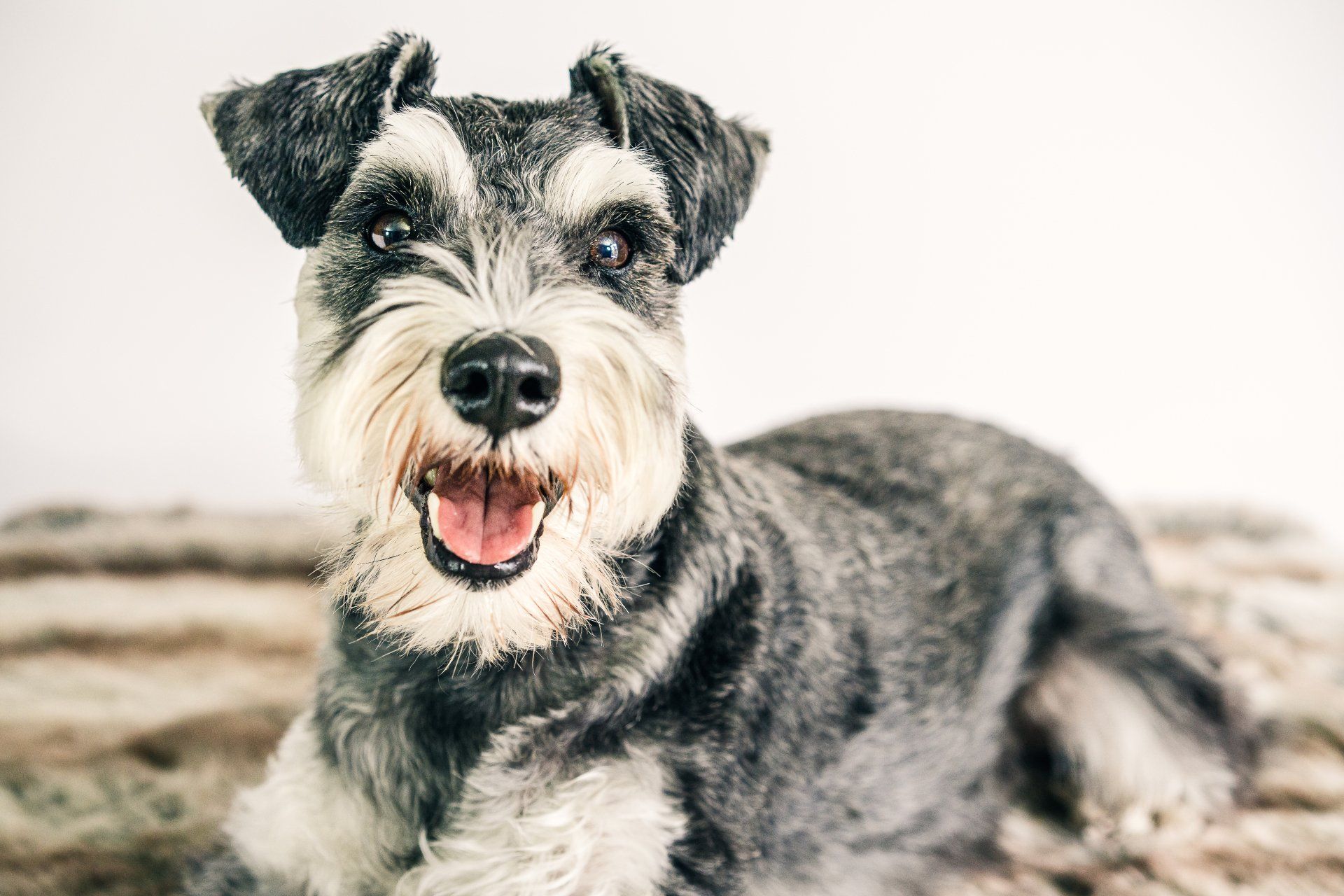Games 4 Dogs
Why Should I Pay for A Puppy Trainer?
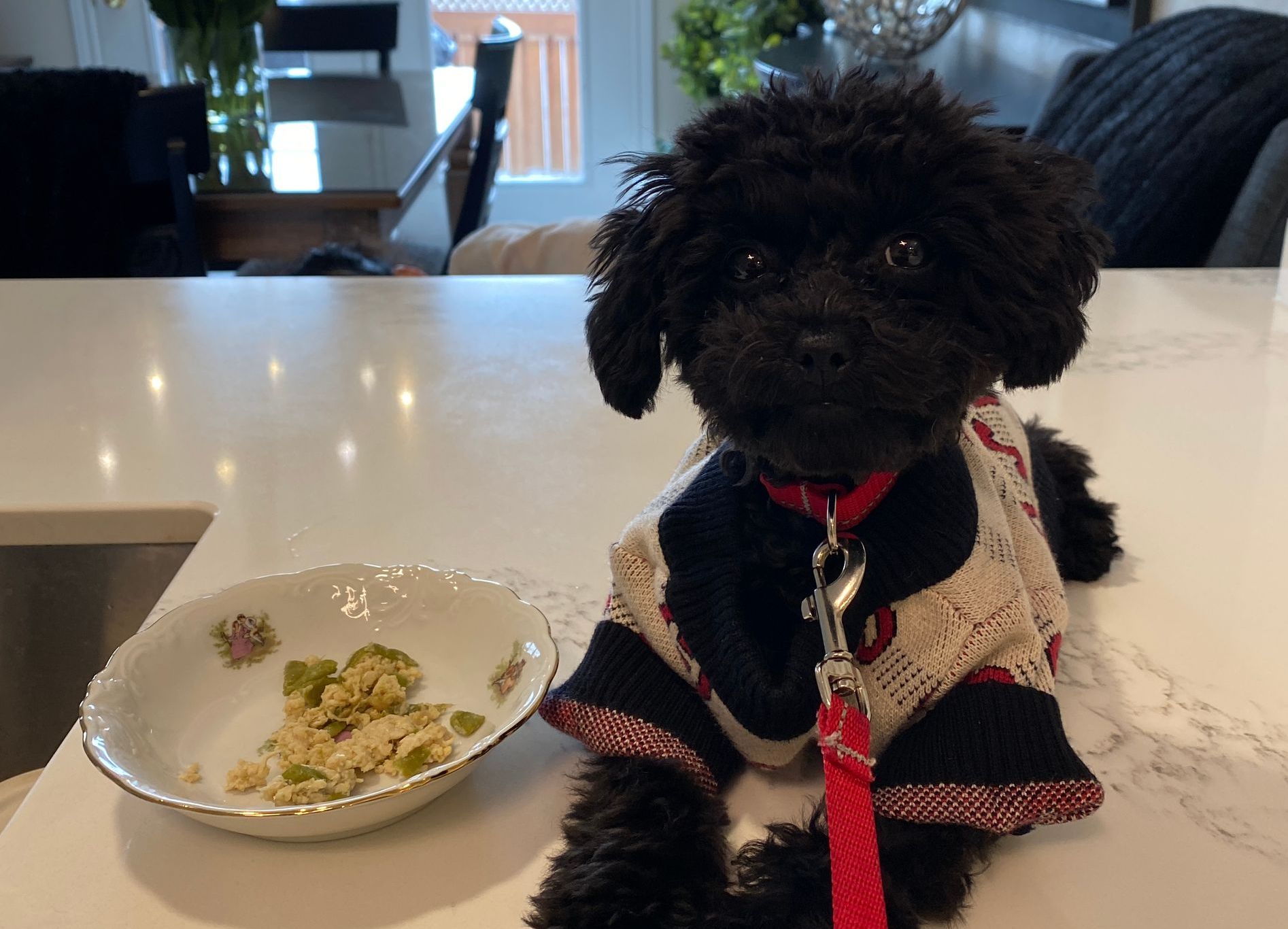
Why Should I Train My Dog?
As a dog and puppy training professional, I know that puppy training can be expensive. To me puppy training and dog training is an investment in your future. It is my job to show you the best and easiest way to create a well mannered future dog! Puppy training can be daunting and I am here to help you every step of the way! I'll help you learn how to:
- Instil Good Behaviour Before Problems Start: Training establishes good manners and behavioural patterns.
- Bonding: Training sessions help build a stronger relationship between you and your pooch.
- Safety: Help your pup learn critical commands like "stay," and "come" ensure safety.
- Socialization: Sound training exposes puppies to different experiences for better social skills.
- Mental Stimulation: Training provides mental challenges and prevents boredom.
- Problem Prevention: Training early prevents behaviour problems that can last a lifetime!
- Public Etiquette: Well-trained puppies are welcomed in public spaces like patios, nurseries and friends homes!.
Puppy and dog training is an essential aspect of responsible pet ownership. When it comes to training dogs, two important concepts come into play: commands and cues. Understanding these two terms' differences is key to effective communication with your pup.
Dog Training Commands
Dog training commands are explicit verbal instructions that you provide to your dog to create specific behaviours. These commands are typically given in a clear and concise manner, using consistent words or phrases. They serve as direct signals to convey your expectations and guide your dog's actions. Commands play a crucial role in establishing boundaries, promoting good manners, and ensuring safety in various situations.
Dog Training Cues
On the other hand, cues refer to non-verbal or subtle signals that dogs learn to associate with a particular behaviour. These basic cues can include hand gestures, basic cues, body language, basic cues or even environmental cues. Unlike commands, cues do not rely on explicit verbal communication but rather on the dog's ability to interpret and respond to these subtle signals. Cues often work in conjunction with commands to reinforce and enhance training outcomes.
Training your dog is not solely about controlling their behaviour; it is also a means of fostering a strong bond and building mutual trust. A well-trained dog is more likely to have a positive and closer relationship with their pet parent and the surrounding community. By investing time and effort into training, you can ensure that your dog companion becomes a well-behaved member of society, capable of navigating various environments and social interactions with confidence. Training also provides mental stimulation and physical exercise for your dog, promoting their overall well-being. It helps to channel their energy into productive outlets and prevent behavioural issues that can arise from boredom or lack of structure. A well-trained dog is happier, more confident, and less likely to engage in destructive or problematic behaviours.
How are Cues and Commands Used To Strengthen Pet Training?
Dog training commands are the cornerstone of a respectful and content pup. They serve as a vital means of communication, enabling us to establish clear expectations of behavior and guide our dogs towards a specific place or action that we like. The combination of teaching of cues and commands enhances communication and behaviour and strengthens your relationship with your pup in the so many ways:
- Clarity: Cues and commands provide clear signals to your pup about what you expect from them. By using consistent cues for specific behaviors, such as "sit" or "down," you establish a common language that your pup can understand. This clarity helps them comprehend your intentions and reduces confusion.
- Mutual Understanding: When you consistently use cues and commands during training sessions, your pup learns to associate those signals with specific actions or behaviours. This mutual understanding allows you to effectively communicate your desires and expectations to your pup, making it easier for them to respond accordingly.
- Trust and Bonding: Training sessions that involve cues and commands require cooperation and trust between you and your pup. As you work together and your pup learns to respond to your cues, they begin to trust your guidance and rely on your leadership. This trust-building process strengthens the bond between you and your pup, fostering a deeper and more positive relationship.
- Problem Solving: Cues and commands enable you to address and redirect unwanted behaviours effectively. For example, if your pup starts jumping on guests, you can use a cue like "off" to teach them to keep their paws on the ground. This problem-solving approach not only improves their behaviour but also shows your pup that you're actively working together to find solutions, further enhancing your communication and relationship.
10 Dog Commands
Watch Me: This command instructs the pup to look directly forward at the pet parent and sustain focus on what the pet parent is saying
- Hold a treat or a toy close to your face to grab your pup's attention.
- Say "Watch me" in a clear and upbeat tone.
- As soon as your pup makes eye contact with you, reward them with "yes" marker and praise and treat.
- Repeat this process, gradually increasing the duration of eye contact before giving the reward.
Sit: This command instructs your dog to move forward and sit down on their haunches with their rear end on the ground. Stand in front of your pup with a treat in your hand, close to their nose.
- Slowly move the treat upward and slightly backward, guiding their head up and their rear end down.
- As their rear end touches the ground, say "Sit" in a firm and clear tone.
- Immediately reward them with the treat and praise.
- Practice this command in various locations and gradually phase out the treat, using verbal praise and physical affection as rewards instead.
Stay: The stay command teaches your dog to remain in a specific position until released, usually accompanied by a hand signal cue.
- Start with your dog in a sitting or lying down position.
- Hold your hand up, palm facing them, and say "Stay" in a calm and assertive voice.
- Take a step back, maintaining eye contact with your dog.
- If they remain in the position, return to them and offer praise and a reward.
- Gradually increase the distance and duration of the stay while reinforcing with rewards and praise.
Down: This command prompts your dog to lie down on their stomach with all four paws on the ground.
- Begin with your dog in a sitting position.
- Hold a treat in your hand and bring it down to the ground in front of them.
- As your dog follows the treat with their nose, move it slowly towards their paws, encouraging them to lower their body into a lying down position.
- Once they are fully down, say "Down" in a firm and clear tone and reward them immediately.
- Repeat the process, gradually phasing out the treat and using verbal praise as a reward.
Come: The come command calls your dog to return to you. It is particularly important for recall and safety.
- Start in a safe and enclosed area.
- Crouch down and open your arms while saying "Come" in an excited and inviting tone.
- Use a treat or a toy as a reward, showing it to your dog as an incentive.
- Encourage them to come towards you, and when they reach you, reward them with the treat or toy and praise.
- Gradually practice this command in different locations, increasing distractions gradually
Leave it: Leave it commands your dog to move away from or ignore an object, item, or food they are interested in.
- Show your dog a low-value item, such as a toy or treat, in your closed hand.
- Say "Leave it" in a firm tone and close your hand.
- Wait for your dog to lose interest and stop trying to get the item.
- As soon as they look away or show disinterest, reward them with a different treat or toy.
- Practice this command with various objects and gradually increase the difficulty.
Heel: Heel instructs your dog to walk beside you on a loose leash, usually positioned at your side or slightly forward or behind.
- Begin walking with your dog on a leash, holding it in your hand.
- Keep your dog on your preferred side, usually with their shoulder aligned with your leg.
- Use a treat or a toy to keep their attention and encourage them to walk beside you.
- Reinforce the desired position by rewarding your dog for staying close and not pulling on the leash.
- Practice this command during regular walks, gradually reducing the need for treats or toys.
Drop it: Drop it commands your dog to release or let go of an item they have in their mouth.
- Begin by playing with your dog using a toy or a safe object.
- Encourage them to hold the toy in their mouth.
- Show them a treat and say "Drop it" in a gentle but firm tone.
- Offer the treat close to their nose, and as they release the toy, reward them with the treat and praise.
- Practice this command during playtime and gradually introduce it in other situations.
Off: This command tells your puppy or dog to remove their paws or body from a person, furniture, or any object they are jumping on or touching.
- When your dog jumps on a person or an object, firmly say "Off" in a clear and assertive tone.
- Immediately turn your body away from them, removing any attention or physical contact.
- Wait for your dog to have all paws on the ground and remain calm.
- Once they are calm and not jumping, praise them and offer attention or a reward.
- Consistently reinforce the command by consistently redirecting jumping behavior and rewarding them for staying down.
Quiet: This command tells your dog to stop barking or vocalizing.
- When your dog starts barking or vocalizing excessively, say "Quiet" in a calm and firm voice.
- Use a hand signal, such as holding your index finger to your lips, to visually reinforce the command.
- Wait for a brief pause in their barking or vocalization.
- Reward them with praise and a treat for being quiet.
- Gradually increase the duration of quiet behaviour before giving the reward.
It's important to give basic cues and remember that consistency and positive reinforcement are key when using these commands. Start with basic commands and gradually progress to more advanced ones as your dog becomes familiar with basic cues taught throughout the training process. Additionally, pairing verbal commands with consistent hand signals can enhance communication and reinforce the desired behaviours.
What are the basic hand signals for dog training?
Basic hand signals for dogs are visual cues used to communicate commands or behaviors without relying solely on verbal cues. While I often suggest pet parents use hand signals that they use hand signals that make them most comfortable, here are some commonly used basic hand signals for dogs:
- Sit: Hold your hand up, palm facing upward, and then lower it towards the ground.
- Stay: Extend your palm, facing your dog, and hold it steady in front of their face.
- Down: Start with your hand held horizontally, palm facing downward, and lower it to the ground.
- Come: Extend your arm out to the side, palm facing upward, and then bring your hand towards your chest.
- Heel: Hold your hand flat against your leg, signaling for your dog to walk closely by your side.
- Leave it: Extend your hand out towards your dog, palm facing them, and then quickly turn your palm downward.
- Off: Hold your hand out, palm facing your dog, and gently wave your fingers in a downward motion.
It's important to remember that dogs may respond differently to hand signals, so it's crucial to associate each hand signal with the corresponding verbal cue during training. Consistency, timing and positive reinforcement are key to both teaching your dog and reinforcing these hand signals effectively. Gradually introduce hand signals alongside verbal cues to ensure your dog understands and responds appropriately to both forms of communication.
Making Sure Your Cue Isn't Confusing for Your Pet
Making sure your cue isn't confusing for your pet is essential to effective communication during training. Dogs rely on consistency and clarity to understand what is expected of them. To avoid confusion, it's crucial to choose cues that are distinct and easily distinguishable from one another. Keep cues short, simple, and consistent in both verbal and visual signals. Avoid using similar-sounding words or cues that may sound too similar to your pet's ears. Remember, dogs don't understand ANY word, unless we teach them the meaning of the word, first. Oftentimes, inexperienced pet parents continue to repeat the word "no" without giving the pup instructions. That leads to pup confusion and parent frustration every time!
A professional dog trainer can help you clear up the areas where confusion or miscommunication is occurring. A pro dog trainer can also ensure that your body language, tone of voice, and hand signals align with the intended cue. Consistency is key in reinforcing the association between the cue and the desired behaviour. Regular practice, reinforcement, and patience will help your pet understand and respond to cues with confidence and clarity. By being mindful of the clarity and consistency of your cues, you can effectively communicate your expectations to your pet and facilitate successful training sessions.
When Cues Go Wrong
When cues go wrong during dog training, it's important to address the situation calmly and make appropriate adjustments. Here are some suggestions on what to do when cues or treats are not working as expected:
- Evaluate the Environment: Assess the environment to identify any potential distractions or factors that may be interfering with your dog's response to the cues. It could be noise, unfamiliar surroundings, or other animals/people present. Minimize distractions as much as possible to help your dog focus on the training.
- Simplify and Revisit Basic Training: If your dog is consistently not responding to a particular cue, it may be helpful to go back to the basics. Revisit the foundational training exercises for that specific cue in a controlled environment with minimal distractions. Break down the cue into smaller steps and reinforce each step with rewards, gradually building up to the complete cue.
- Check Your Timing and Body Language: Dogs are highly attuned to body language and subtle cues from their owners. Ensure that your timing is precise and that your body language is clear and consistent with the cues you are using. Dogs may become confused or unresponsive if there are inconsistencies in your signals or if you inadvertently reinforce unwanted behaviors.
- Assess Training Methods: Evaluate the training techniques and methods you are using. Positive reinforcement-based methods that focus on rewarding desired behaviors are generally effective. However, if you may be inadvertently using negative communication or punitive teaching methods which are counterproductive and result in your dog becoming fearful or unresponsive. Consider consulting a professional dog trainer who can provide guidance on positive and effective training techniques.
- Be Patient and Persistent: Remember that training takes time, and every dog learns at their own pace. Stay patient, consistent, and persistent in your training efforts. Celebrate small victories and keep reinforcing positive behaviors with rewards and praise. Consistency and repetition will help your dog better understand and respond to cues over time.
Effective dog training requires a strategic approach that incorporates key tips and techniques. By keeping training sessions focused you can optimize your dog's attention span and learning potential. Using positive reinforcement while using treats as lures helps establish a strong foundation and promotes impulse control. Clear and consistent communication skills, including verbal cues and hand signals, foster understanding between you and your dog. I always suggest clients start with basic commands such as watch me, sit, and stay, which builds a solid training foundation of skills. Incorporating a release word and making training sessions fun, short and rewarding creates a positive learning experience for both you and your pup. Patience, consistency, and teaching your dog one command at a time in a distraction free environment first are essential for successful training. By following these tips and personalizing your approach to suit your dog's individual needs, you can teach them a wide range of commands and behaviours, fostering a strong bond and well-behaved companion.

